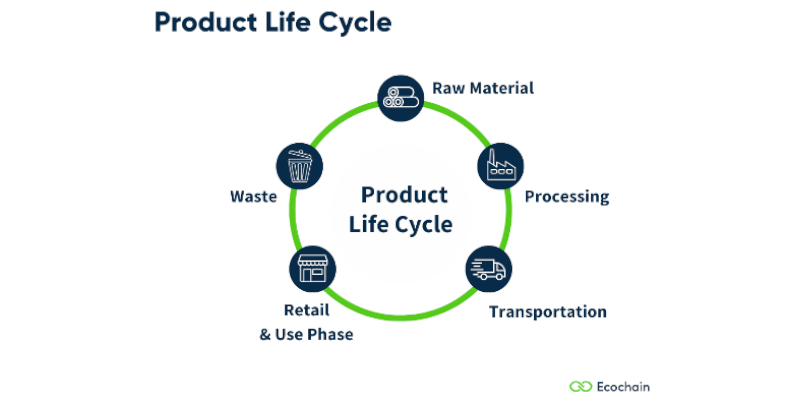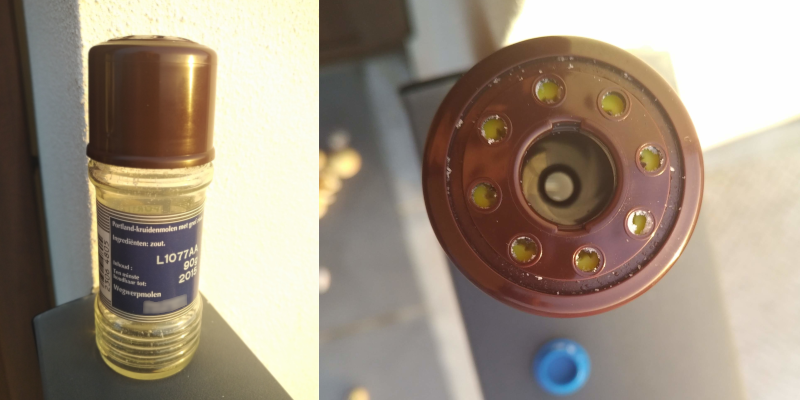We all know it – consumption is ruining our planet. Therefore, it’s vital to make the products we need more sustainable. Luckily, choosing “greener” raw materials only scratches the surface of what Sustainable Product Design can do – how about enhancing the durability and repairability of your products, or leveraging sustainable consumer behavior with your design? This article teaches Product Designers about:
- Ecodesign and Circular Design Approaches
- Sustainable design choices for each product life-cycle stage
- How measuring environmental impacts supercharges design choices
Sustainable Design Approaches
Sustainable Design encompasses two main complementary branches: Ecodesign and Circular Design*.
- Ecodesign minimizes a product’s environmental footprint. With the help of Life Cycle Assessment (LCA), it considers all life cycle stages to find and employ the most effective impact reduction measures.
- Circular Design aims to keep materials within the economic loop by repurposing or recycling them. It focuses on the raw material and waste stages. Products can also be certified as circular.
Good news: In the EU, Sustainable Design will gain increasing support from the “New Circular Economy Plan” – comprising the Ecodesign for Sustainable Products Regulation and Right to Repair initiatives. The legislation is still under development, but the sustainable changes you make today set you (and our planet) up for success. So let’s dive into it!
*Social responsibility considerations, such as sourcing from suppliers with fair wages and labor practices are great. However, they aren’t strictly necessary for Ecodesign or Circular Design, and cannot be measured with LCA.
Sustainable Design Ideas by Life Cycle Stage
Let’s look at sustainable design measures you can take in each life-cycle stage.

Choosing Raw Materials
Raw materials always come with environmental impacts. Ecodesign looks at the environmental data of the input material options* and chooses the one with the lowest impact. Sustainable choices are for instance
- biobased materials
- recycled plastics
- reducing the amount of material required – e.g. by making it thinner
To create circular products, use recycled or up-cycled materials and components – you want to save materials from going to waste. Reused materials often have lower environmental impacts by sparing virgin-material-production impacts**. Thus, Circular Design and Ecodesign coincide here.
*This data is contained in LCI databases, available through LCA software like Mobius, or on supplier EPDs.
**Read more about how recycled input materials show up in your LCA results here.
Manufacturing & Processing
Innovative manufacturing techniques can reduce emissions, waste, and pollution. Ecodesign uses LCA to find which production processes are most in need of innovation (by showing you the impact hotspots).
For example: instead of bleaching their jeans with harmful chemicals, geeky Mud-jeans achieve a used look with lasers and ozone. Or: switching to renewable energy can reduce the impacts of a whole production site (admittedly, such decisions are rarely up to the designer alone).
The innovations at your disposal are unique to your product and manufacturing partners. Here, the research task is up to you and your suppliers. LCA cannot innovate your processes for you, only measure your success.
Transportation
By designing products for efficient (bulk) shipping, and choosing low-impact packaging, greenhouse gas emissions from transport can be reduced.
- Think of stackable products, or juices that are transported as concentrates and mixed with water afterward.
- Tying back to the previous life-cycle stages: choose materials and processes available in the same region, maybe even close to your customers. This reduces transport distances and thereby greenhouse gas emissions from fuel use.
As always, it is crucial to measure the impact of your changes – depending on the product in question, transport might, or might not, be a big part of its environmental footprint.
Product Use Phase
Design enables energy efficiency and long product lives. In general, longer product lives lead to lower “impact per product lifetime” and decrease overall consumption of replacement products.
Design measures that prolong product lifetimes include:
- Choosing robust materials that age gracefully
- Design things people love, so they maintain them well and keep them longer. Thoroughly test and optimize your designs for practicality, longevity, and beauty.
- Enabling product repair* through modular product design: out-of-date or broken components can be replaced individually. A business example here is the modular phone from Fairphone. *Repair requires support from your corporate strategy – read more below!
- Enable second lives: for example, this single-use salt-grinder could have easily been a multiple-use object, if the hole had been a bit bigger to enable refill.

Furthermore, design can nudge consumers to use products more responsibly*. Let’s look at some examples:
- People often overdose washing-powders or -liquids, which has adverse environmental effects. Some producers prevent this by selling washing detergent in capsule or tablet form.
- By not including a standby button on electronic devices, people are “forced” to save much electricity (and money).
*The line between nudging and patronizing can be thin. Use your powers wisely.
Lastly, as called for by design visionary Victor Papanek, design for people’s needs, instead of fleeting wants and trends. For instance, Skullcandy discovered that batteries in headphones contribute significantly to environmental impacts. By questioning the necessity of trending 34-hour battery life, they halved the ecological footprint of their headphones.
Disposal
Designing products with component reuse and recycling in mind is essential for achieving product circularity. Read more about this here.
Overall, the key is modular design.
- It enhances circularity – components can be reused, and products refurbished if one can separate the “still good” from the “bad” components at EoL.
- When each component is made from one material exclusively (“Mono material”), components can be recycled more easily. The more valuable materials can be recovered while others might go into waste processing.
To enable efficient disassembly and material separation, incorporating features such as dissolvable threads in textiles or replacing glue with clips can be effective.
When assuming product recycling in LCA: is there recycling infrastructure available in the markets you operate in? Or do you need to take ownership of your products beyond end-of-life, for recycling to realistically take place? Read more about take-back schemes below!
Designers are no Iiland
Some design features need to be “activated” by other departments in your company. Especially repair, component reuse, refurbishment, and recycling require strong support by corporate strategy.
Companies can:
- retain product stewardship through take-back or leasing schemes. This ensures that products are reused, refurbished, or recycled at the end of their life.
- provide extended repair guarantees, affordable and convenient repair services, or DIY repair tutorials.
- make spare parts and repair information available. Hint: in the EU, this could soon become mandatory under the Sustainable Products Initiative.
Also, bring your customers on board: customers are the ones that make sure products enter repair, recycling, or return infrastructure. Your marketing should communicate customers’ opportunities for sustainable impact.
Maximize Sustainable Design Impact with Environmental Data
Environmental data is the entire decision basis in Ecodesign. It is obtained with Life Cycle Assessment (LCA) – the only method that reveals all environmental implications.
Whenever you have design options, LCA can help you make the decision – it tells you which option is better for the environment. LCA data also helps communicate the environmental merit of your choices to management and customers.
Ecochain Mobius is an LCA tool specifically developed for product designers. With scenario-testing you can find the impact of design modifications in just a few clicks. Starting is easy – use your existing data, learn from it, and improve iteratively. Give it a (free) try today!
Conclusion
Sustainability in product design is crucial for reducing the environmental impacts of consumption. Product designers can make a significant contribution by implementing sustainable design practices. The main branches of sustainable design, Ecodesign (reducing environmental impacts by considering all life cycle stages and employing effective measures identified through Life Cycle Assessment (LCA)) and Circular Design (repurposing or recycling materials, aiming to keep them in circulation), offer approaches to minimize environmental footprints and keep materials within the economic loop.
Sustainable design features often require support from other departments within a company. Repairability, component reuse, refurbishment, and recycling necessitate strong support from corporate strategy. Companies can retain product stewardship through take-back or leasing schemes, offer repair guarantees and services, provide spare parts and repair information, and involve customers in sustainable practices through effective marketing communication.
Life Cycle Assessment (LCA) provides environmental data, which is crucial in sustainable design decision-making. LCA helps designers compare and evaluate different design options, communicate the environmental merits of their choices to stakeholders, and improve iteratively. Ecochain Mobius is an LCA tool specifically developed for product designers. Start measuring your impact with Mobius today – unleash your creative powers for a better world.
References
The design vision of Victor Papanek
Book: Design for Sustainability: a practical approach.
Article: Overcoming Barriers to circular product design
Article: Design for Sustainability: Current Trends in Sustainable Product Design and Development
